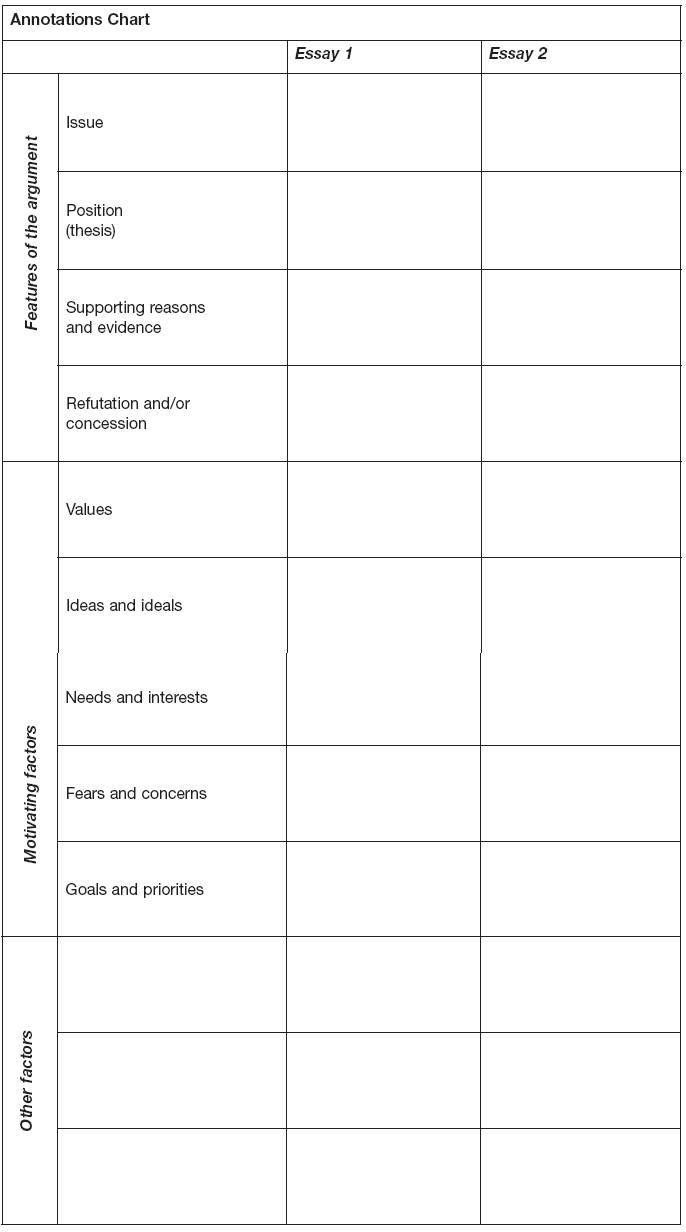Analyze the opposing argument essays.
The following activities will help you identify the basic features of the opposing arguments you are analyzing and assist you in identifying motivating factors underlying the points of disagreement and potential agreement you find in the essays. Your instructor may ask you to use the first Ways In activity to annotate the essays as you read them, and then to complete the Annotations Chart, which will help you organize and draft your common ground analysis. Keep in mind that most writers need to reread parts of the opposing argument essays more than once.
Ways In
How Can I Analyze Each Argument Essay?
- Start by reading each essay, highlighting and labeling in the margin where you find the following basic features of the argument:
- Issue Where the writer introduces the issue
- Position Where the writer’s position or opinion on the issue is stated (thesis statement)
- Support Where the writer offers supporting reasons and evidence for the position
- Concession/Refutation Where, if anywhere, the writer concedes (accepts) or refutes (argues against) other points of view on the issue
- Make a note on the essay where you detect any of these underlying motivating factors:Printed Page 200
- Values—moral, ethical, or religious principles (for example, fairness, justice, equality, “do unto others”)
- Ideas and ideals (for example, ideas about democracy, such as every adult has the right to vote and to freedom of speech)
- Needs and interests (for example, food, shelter, work, respect, privacy, choice)
- Fears and concerns (for example, regarding safety, abuse of power, consequences of actions taken or not taken)
- Goals and priorities about what is most important or urgent (for example, whether obedience to authority is more important than independent thinking, whether global warming ought to be a concern)
- Fill in the Annotations Chart that follows by entering your notes and paragraph numbers for each essay you’ve analyzed. Creating a chart will make it easy for you to locate points of agreement and disagreement. (Remember that you may have to leave some sections blank because you may not find examples of all the features or motivating factors in each argument essay you analyze.)
An electronic version of the chart is available on the companion Web site at bedfordstmartins.com/theguide.
For an example of annotating and the annotations chart, see A Writer at Work, pp. 213-15.

TEST YOUR CHOICE
After analyzing the argument essays, ask yourself the following questions:
- Do I understand the opposing positions and their supporting arguments?
- Have I been able to find a potential basis for agreement in motivating factors such as basic values or ideals, shared interests or concerns, or common goals that drive the arguments?
If you cannot answer yes to both of these questions, you may want to consider choosing a different set of essays to write about, or discuss them with your instructor.